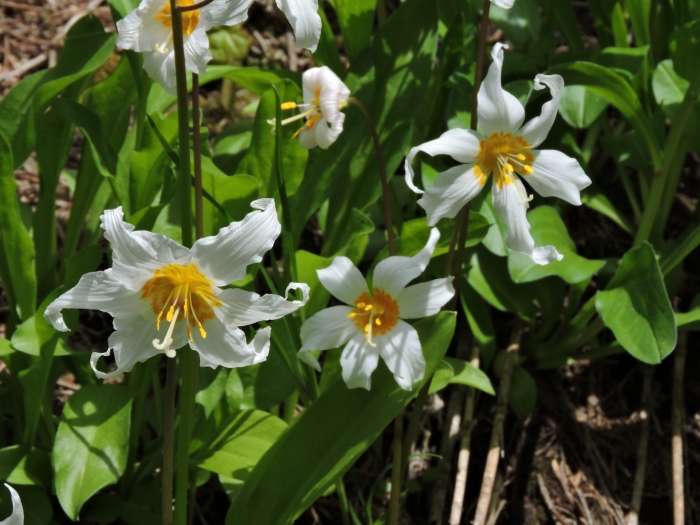Avalanche Lily
(Erythronium montanum)
Avalanche Lily (Erythronium montanum)
/
/

Jacy Chen
CC BY 4.0
Image By:
Jacy Chen
Recorded By:
Copyright:
CC BY 4.0
Copyright Notice:
Photo by: Jacy Chen | License Type: CC BY 4.0 | License URL: http://creativecommons.org/licenses/by/4.0/ | Rights Holder: Jacy Chen | Publisher: iNaturalist | Date Created: 2015-06-22T16:12:23-07:00 |





















Estimated Native Range
Summary
Erythronium montanum, commonly known as Avalanche Lily or White Avalanche Lily, is a perennial herb that is deciduous in nature. It is native to the alpine and subalpine zones of the Pacific Northwest, specifically coastal British Columbia and the Olympic and Cascade Ranges of Washington and Oregon. This plant typically grows to a height of 10-20 centimeters and is characterized by its oblong-lanceolate unmottled leaves and striking white tepals with a yellow base that bloom in late spring, shortly after the snow melts. The flowers are showy and attract pollinators, blooming from April to July depending on elevation and snowmelt timing.
Avalanche Lily is appreciated for its delicate, nodding flowers that can brighten up rock gardens and woodland settings. It is often used in native plant gardens and restoration projects within its range. In cultivation, Erythronium montanum requires moist, well-drained soil rich in organic matter and thrives in part shade conditions, mimicking its native damp subalpine woodlands and alpine meadows. It is generally low-maintenance once established but may require protection from slugs and snails. This species is not known for aggressive roots or significant disease problems, but it can be sensitive to drought and excessive heat.CC BY-SA 4.0
Avalanche Lily is appreciated for its delicate, nodding flowers that can brighten up rock gardens and woodland settings. It is often used in native plant gardens and restoration projects within its range. In cultivation, Erythronium montanum requires moist, well-drained soil rich in organic matter and thrives in part shade conditions, mimicking its native damp subalpine woodlands and alpine meadows. It is generally low-maintenance once established but may require protection from slugs and snails. This species is not known for aggressive roots or significant disease problems, but it can be sensitive to drought and excessive heat.CC BY-SA 4.0
Plant Description
- Plant Type: Herb
- Height: 0.5-1 feet
- Width: 0.5-1 feet
- Growth Rate: Slow
- Flower Color: White
- Flowering Season: Spring
- Leaf Retention: Deciduous
Growth Requirements
- Sun: Part Shade
- Water: Medium
- Drainage: Medium
Common Uses
Bee Garden, Low Maintenance, Water Garden
Natural Habitat
Native to alpine and subalpine zones of the Pacific Northwest, specifically coastal British Columbia and the Olympic and Cascade Ranges of Washington and Oregon
Other Names
Common Names: Avalanche Lily, Mountain Fawn Lily, White Glacier Lily, Glacier Fawn Lily, Western White Fawn Lily
Scientific Names: , Erythronium montanum, Erythronium grandiflorum var. album,
GBIF Accepted Name: